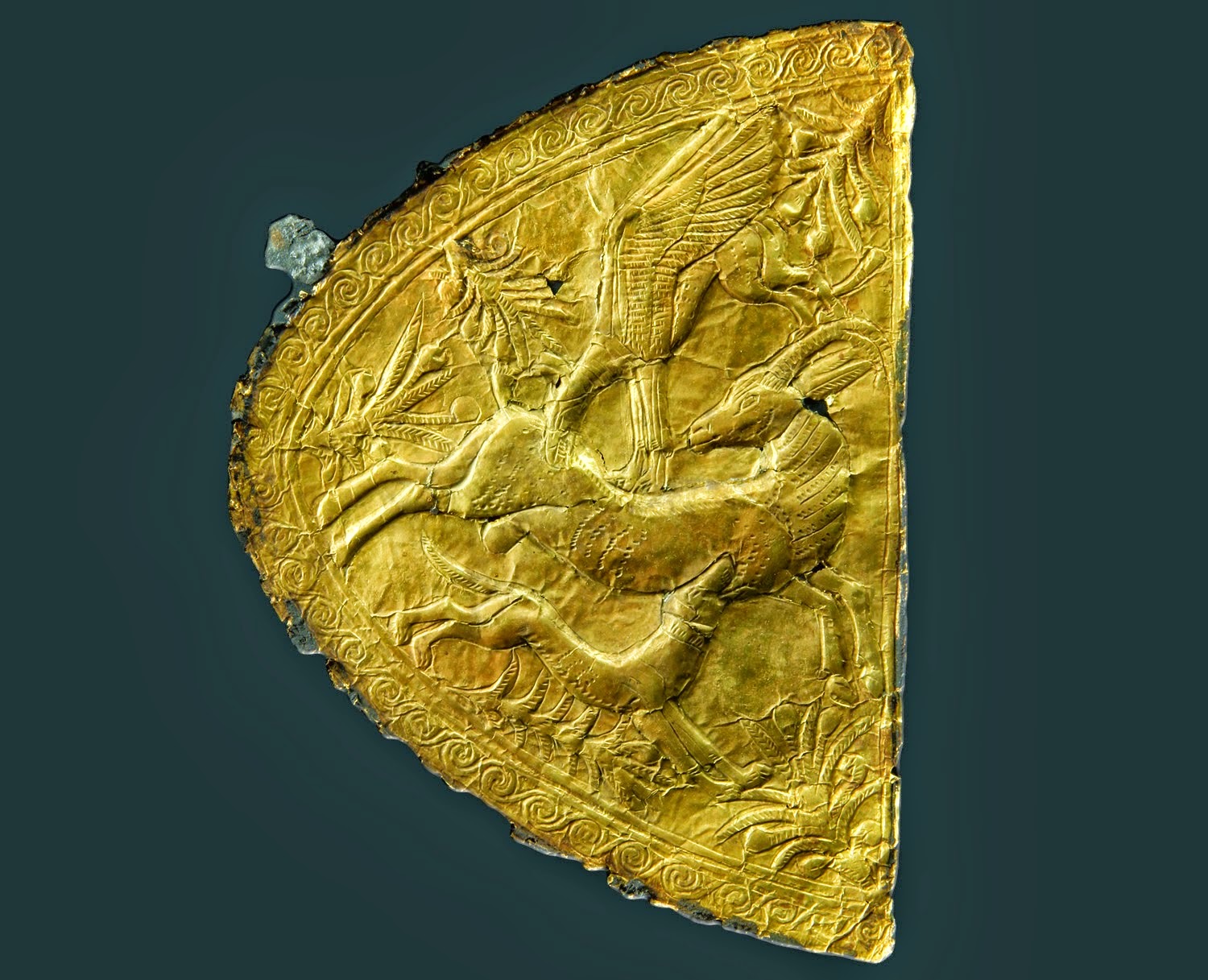...Sono trascorsi 92 anni...
I finimenti dei cavalli del carro, le decorazioni stesse del carro da guerra ed i foderi delle armi del giovane Faraone sono di grandissimo interesse, perché rappresentano il risultato
della fusione di motivi Levantini ed Egizi nell'arte quotidiana del XIV secolo a.C.
Tali oggetti d'arte non sono mai stati visti prima dal pubblico e pochissimi sono gli archeologi che li hanno potuto avvicinare.
Una cooperazione Egizio-Tedesca collaborerà al restauro dei pezzi archeologici e fra circa tre anni sarà possibile esporli in un museo del Cairo.
Sono tutti d'accordo, nel mondo, che questa è una bella notizia!
(Per fortuna non si tratta delle statue di Monte 'e Prama, altrimenti, sai che cagnara da parte della setta shardanista!)...
Restored gold objects from the tomb of Tutankhamun
to be
displayed for first time.
Even the tomb of Tutankhamun holds virtually unknown treasures. A group of decorated gold leaf-on-leather objects is currently under restoration by an Egyptian-German team in the Egyptian Museum, Cairo, to be displayed for the first time.
Gold-leaf decoration showing a hunting-scene (a dog and a griffin attacking an ibex) using motifs from levantine art [Credit:: Christian Eckmann]
The objects which formed part of Tutankhamun's war chariots, the trappings of their horses and the sheaths of weapons are since their time of discovery in 1922 in a bad condition and were never studied adequately.
However their decoration is of unusual beauty and decisive historical significance.
The combination of Egyptian and Levantine motifs bears witness to the political and cultural interconnections between Egypt and the city-states of the Levant in the 14th century BCE.

The restoration lab in the Egyptian Museum Cairo
[Credit: Christian Eckmann]
A team of restoration specialists and archaeologists from the Egyptian Museum Cairo, the Römisch-Germanisches Zentralmuseum Mainz (the leading German Institution for scientific restoration), the Institute of Near Eastern Archaeology of the University of Tübingen (which excavated and studied similar objects at the site of ancient Qatna in Syria) and the German Archaeological Institute Cairo embarked now on a project to carry out a full archaeological and technological analysis of this group of objects and to restore them so that their value and importance can be appreciated for the first time.

H.E. the Minister of State for Antiquities, Prof. Dr. Mohamed Ibrahim, the representative of H.E. the ambassodor of Germany in Egypt, Chargé d'Affaires Kai Boeckmann and Christian Eckmann, restoration expert from the Römisch Germanisches Zentralmuseum Mainz discussing the work of the project
[Credit: Christian Eckmann]
Thanks to special funding by the Federal Republic of Germany and investing a sum exceeding 1 million Egyptian Pounds, a specialized restoration lab could be equipped at the Egyptian Museum Cairo.
To support professional capacity building in the context of this project, scholarships are extended to Egyptian restorers to receive high-level specialized training at the Römisch-Germanisches Zentralmuseum Mainz.
The project was inaugurated on the 6th of April 2014 in the presence of H.E. the Minister of State for Antiquities, Prof. Dr. Mohamed Ibrahim, the representative of H.E. the German Ambassador to Egypt, Chargé d'Affaires Kai Boeckmann and the representatives of the research institutions involved.
It is planned that the project, which is supported also by funds of the German Research Council (DFG), will be concluded after three years with a first public exhibition of the objects in the Egyptian Museum.
Source: Deutsches Archäologisches Institute [June 01, 2014]
